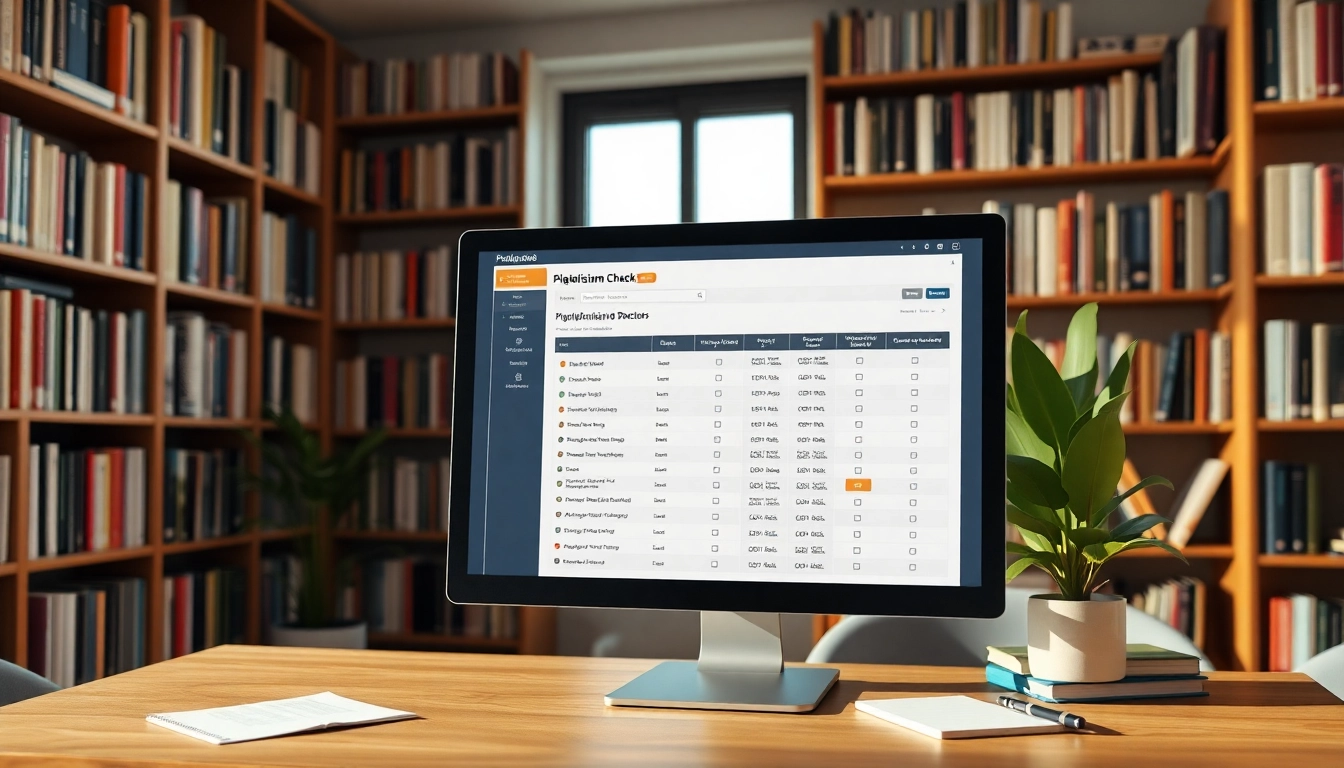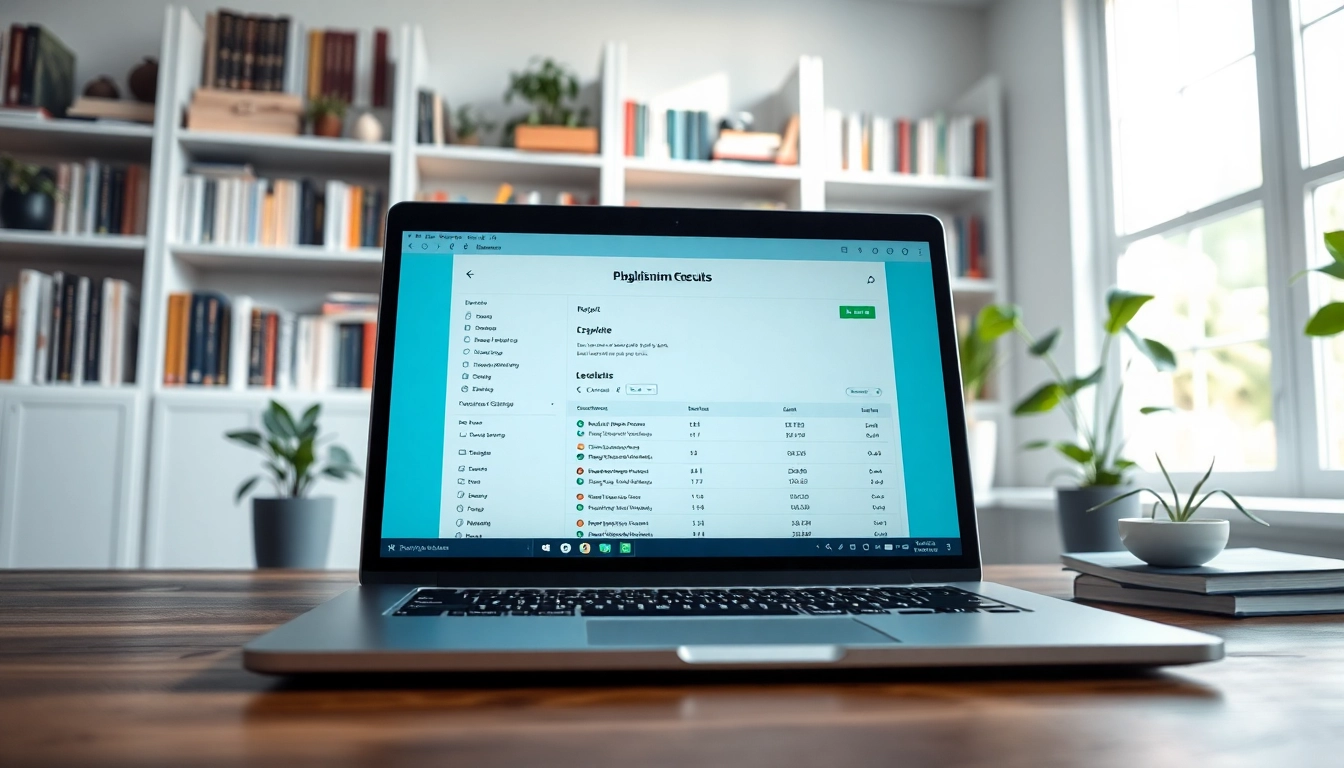Understanding Plagiarism and Its Implications
Plagiarism is a pervasive issue in both academic and professional settings. With the advent of digital content, the ease of accessing and reproducing text has increased significantly. However, this convenience comes with a heavy moral and ethical responsibility to credit original sources. A robust plagiarism detector can be an invaluable tool in ensuring originality and integrity in writing.
What is Plagiarism?
Plagiarism involves using someone else’s work, ideas, or expressions without proper acknowledgment. It can manifest in various forms, including:
- Direct Plagiarism: Copying text word-for-word without quotation marks or citation.
- Self-Plagiarism: Reusing one’s own previously published work without citation.
- Paraphrasing: Restating someone else’s ideas in your own words without giving credit.
- Accidental Plagiarism: Failing to cite sources correctly, often due to negligence or a lack of understanding about proper citation guidelines.
Understanding these various types helps individuals recognize the importance of maintaining academic honesty and integrity.
Consequences of Plagiarism in Academia
In academic contexts, the consequences of plagiarism can be severe. They may include:
- Academic Penalties: Institutions often impose strict sanctions, including failing grades, loss of scholarships, expulsion, or publication withdrawal.
- Reputation Damage: A reputation for dishonesty can affect future academic or career prospects, making it difficult to obtain jobs or further studies.
- Loss of Credibility: Academic integrity is vital; once lost, it can take a long time to rebuild trust.
These consequences highlight why employing a plagiarism detector is critical for students and professionals alike.
Importance of Originality in Writing
Originality in writing fosters innovative ideas and critical thinking. It not only reflects personal voice and creativity but also upholds academic standards. Original work contributes to the broader body of knowledge and encourages a culture of respect for intellectual property rights. As such, leveraging tools that promote originality is essential in both educational and professional environments.
How a Plagiarism Detector Works
Utilizing Algorithms for Text Comparison
Plagiarism detectors employ sophisticated algorithms to compare submitted text against vast databases of existing content, including web pages, academic papers, and other documents. The basic process involves:
- Input Analysis: The user submits a document that needs to be checked for originality.
- Text Processing: The system processes the text to identify phrases, sentences, and overall structure.
- Comparison: The processed text is compared against existing content in the database using algorithms that check for matches and similarities.
- Report Generation: Finally, the tool generates a report indicating the percentage of originality versus plagiarized content.
Understanding Detection Techniques
Different plagiarism detection techniques can be employed, including:
- Exact Matching: This technique looks for identical text matches.
- Near-Matching: The system identifies phrases or sentences that are similar but not identical, which is particularly useful for detecting paraphrased content.
- Semantic Analysis: Advanced tools use natural language processing to understand the context and meaning behind the text, improving detection rates for more complex forms of plagiarism.
These techniques help create a comprehensive detection process that ensures a rigorous assessment of the text’s originality.
Benefits of AI in Plagiarism Detection
Artificial Intelligence has revolutionized plagiarism detection by increasing accuracy and efficiency. The benefits include:
- Speed: AI can analyze texts rapidly, providing results within seconds compared to manual checks.
- Scalability: Capable of handling large volumes of text across varied formats, AI can efficiently check everything from short essays to extensive research papers.
- Contextual Understanding: AI-powered tools can comprehend nuances and semantics, reducing the chances of false positives in detection reports.
The integration of AI thus significantly enhances the reliability and user experience of plagiarism detection tools.
Features to Look for in a Plagiarism Detector
Accuracy and Reliability
When evaluating plagiarism detectors, accuracy is paramount. A reliable tool should provide precise reports that genuinely reflect the originality of the text. Factors contributing to accuracy include:
- Comprehensive Database: A wide-ranging database covering various content types (academic papers, websites, journals) increases detection fidelity.
- Regular Updates: Tools that frequently update their databases help maintain accuracy as new content is continuously published online.
- Feedback Mechanism: Quality detectors provide users with explanations for detection results and how to improve writing to reduce plagiarism risks.
Supported File Formats and Types
A good plagiarism detector should support multiple file formats such as:
- Text files (.txt)
- Word documents (.doc, .docx)
- PDF files (.pdf)
- HTML files (.html)
Moreover, flexibility in handling different formats ensures that users can check various documents effortlessly.
User-Friendly Interface and Experience
The user interface is a critical aspect of any plagiarism detector. Key features that enhance user experience include:
- Intuitive Navigation: Easy-to-navigate layouts help users quickly find and utilize features without extensive training.
- Helpful Tutorials: Comprehensive tutorials and assistance can help users understand how to effectively use the tool.
- Customizable Reports: Options to tailor reports according to user preferences (e.g., highlight matching text, specify report style) enhance usability.
Comparing Top Plagiarism Detector Tools
Free vs. Paid Plagiarism Detectors
When considering plagiarism detectors, users often face the dilemma of choosing between free and paid options. Each has its advantages and disadvantages:
- Free Detectors: Typically provide basic functionality, sufficient for light use. However, they may lack comprehensive databases and advanced features.
- Paid Detectors: Offer more accurate results, quantum databases, and additional features (like grammar checks and detailed reporting), making them suitable for heavy academic or professional usage.
Assessing needs and use cases is crucial in making informed decisions about which type of tool is best suited for the user.
Evaluating Popular Tools: A Side-by-Side Comparison
To illustrate the differences among popular plagiarism detectors, consider the following comparison:
| Plagiarism Detector | Free Version | Accuracy | Supported Formats | Advanced Features |
|---|---|---|---|---|
| Grammarly | Yes | High | .doc, .txt, .pdf | Grammar checker, style suggestions |
| Turnitin | No | Very High | All formats | Detailed reporting, feedback tools |
| Duplichecker | Yes | Moderate | .txt, .doc, .pdf | AI detection tools |
| PapersOwl | Yes | High | All formats | Academic writing assistant |
User Reviews and Experiences
User feedback can provide valuable insights into the strengths and weaknesses of various plagiarism detectors. Many users highlight the importance of:
- Responsive Customer Support: Quick assistance in case of technical difficulties.
- Accuracy of Results: Consistency in detection accuracy contributes to user satisfaction.
- User Experience: Ease of use often makes the difference in whether users recommend the tool.
Online platforms like Capterra and G2 provide users an opportunity to read reviews and make informed choices based on firsthand experiences.
Implementing a Plagiarism Detector in Your Workflow
Integrating Detection Tools for Students
To effectively implement plagiarism detectors in academic settings, consider the following steps:
- Training Sessions: Conduct workshops for students on how to use the detectors effectively.
- Incorporating into Assignments: Encourage students to use plagiarism detection tools as part of their assignment submission process.
- Providing Feedback: Offer constructive feedback based on results from the detectors to foster learning and growth.
Best Practices for Educators
Educators can facilitate academic integrity by establishing clear guidelines regarding plagiarism and its consequences. Best practices include:
- Establishing Policies: Create and communicate clear policies regarding plagiarism.
- Encouraging Original Work: Foster a culture of originality and creativity in writing assignments.
- Utilizing Technology: Use plagiarism detectors as a preventative measure rather than only a punitive one.
Case Studies of Successful Implementation
Successful integration of plagiarism detection tools can be observed in various educational institutions. For instance, many universities have adopted Turnitin as part of their assessment processes, showing a marked increase in student awareness of plagiarism. Educators report improved originality in student submissions, indicating that using a plagiarism detector as a support tool rather than a policing mechanism can yield positive educational outcomes.
Ultimately, embracing these practices contributes to an environment of academic integrity, ensuring that students not only understand the importance of originality but also develop the necessary skills to create authentic work.



